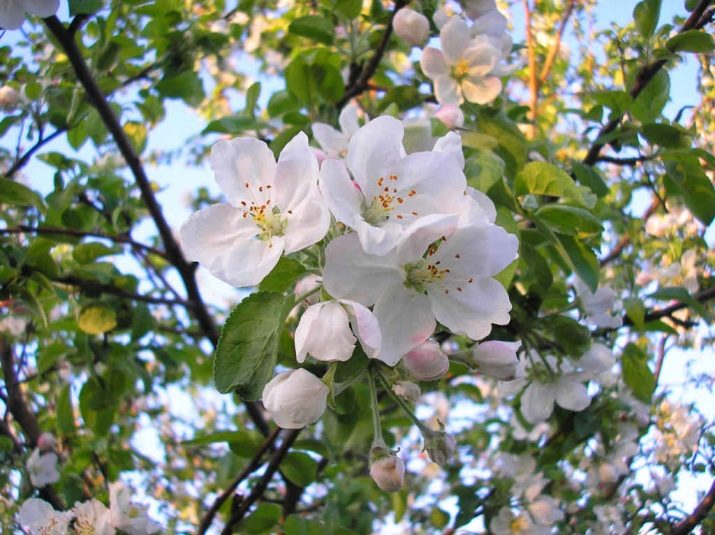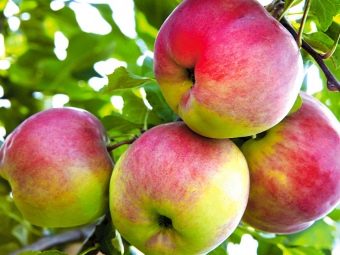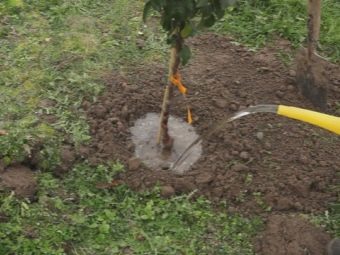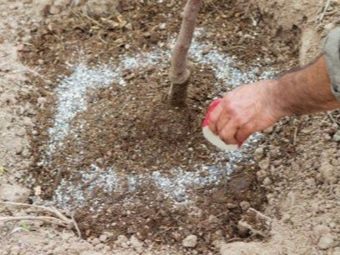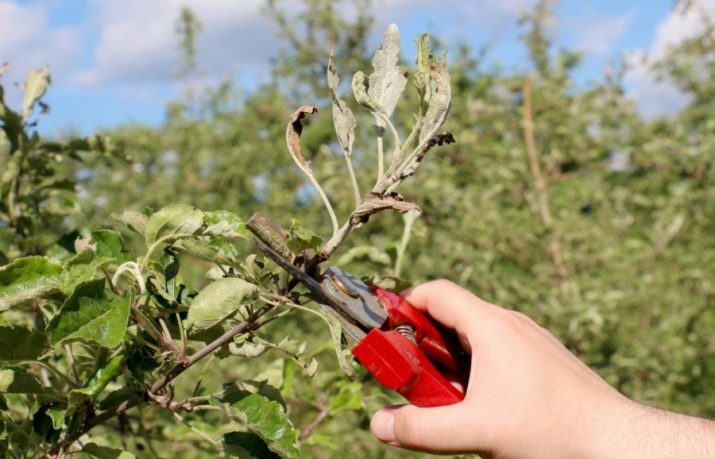Description and agricultural technology of the apple tree variety “Aksena”
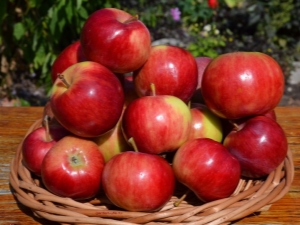
In conditions of a specific Ural climate, more recently local gardeners could only dream of growing apples and other fruit trees. After all, the local severe winters did not tolerate even wild varieties.Apple "Aksen" made a breakthrough in the Ural gardening.
Creating a variety
The variety "Aksen" only a few decades. But work on the creation of frost-resistant, with a good immunity of the plant was carried out by the breeder Leonid Kotov since 1984. He tried to bring a variety of apple resistant to the whims of the Ural climate. As a result, the gardener managed to defeat all five existing scab species. Moreover, a number of varieties of Ural apple trees (Rozochka, Pervouralskaya, Torch, Good News) resistant to fungal diseases were born in this direction. Other types of fruit trees were also bred.
Apple tree "Aksen" got its name thanks to the breeder Vasily Matveyevich Aksenov, who continues to work on the best indicators of the variety even today. The Silver Hoof variety and donor 22-40-67 with increased antifungal immunity have become the donor base of the Ural "Akseny". The result was a miracle plant, after which not only from all over the Urals, but also from more southerly favorable areas come to the Sverdlovsk plant gardening station. Characteristics and yield varieties in a different climate are also consistently high.
Characteristic
Tree
The frost-resistant summer variety ripens in August in a short time, which makes it possible to ripen the crop even in a short summer. A tree of average height, not more than five meters in height. The diameter of a thick round crown is about six meters. Large branches with a tree trunk make a right angle, so the crown looks sprawling. The foliage is a rich green color, flowers are large, saucer. It grows at a moderate pace, the first years of life add 30-40 cm each, then the growth rate slows down a bit. The tree begins to bear fruit in the fifth year after planting.
Fruit
Apples are not small, weighing 90-120 g, with a red blush, traced fuzzy stripes. Very pleasant sweet-sour taste of creamy flesh. The yield for the northern regions is high, with an average of 18 kg per tree. "Aksen" refers to summer varieties, therefore, the fruits are not preserved in winter, the crop should be carefully removed from the trees and placed in a cool place.
It is better not to over-ripen the fruit, it will affect the shelf life. During the month, you can feast on apples or preserve them for winter consumption.
Agrotechnology
In order for the fruits to enjoy a good taste and an active harvest, the plant requires care. Description of the variety suggests that the Axen apple tree is unpretentious, so care will be required minimal. The plant needs pollinators, it should not be planted alone. Apple “Raika” or other fruit trees can be a good pollinator.
Landing
It is better to plant seedlings in the spring warmed land, since in the fall young plants may not have time to adapt to frost. There are no problems with landing. The trees are hardy and unpretentious, just dig a hole, straighten the root and fill the sapling with soil. Then fluff and pour the ground. Any sort of apple loves lighted places, "Aksena" is no exception.
Planting a number of other trees, you should be aware of the six-meter diameter of the future crown. Apple tree prefers moist nutrient soils with neutral acidity.
Watering
Watering seedlings depends on weather conditions. If there is little precipitation, the tree of the first year of life is watered every other day until it takes root. Older apple trees no longer require as much moisture, it is enough to water them 5-7 times during the season. After watering, the soil must be plowed up and covered with dry earth to maintain moisture. The presence of close groundwater will allow irrigation of apple trees even less.
Top dressing
Fertilize the plant starts in the spring and ends in the fall. In a harsh climate, the first dressing should be done in the spring, when the soil begins to warm up.Digging up the garden, dry fertilizers are digging into the root system, you can dilute the preparations in water and apply them to the soil in the form of watering. If the plant does not give abundant flowering, after shedding the ovary, it should be fed again.
In the summer, during the warmest months, the plants are sprayed with liquid nitrogen fertilizers, actively watering the crown. In the middle of summer you can use mineral and potash fertilizers, as well as phosphates. At the end of the summer, to stimulate growth, apples are again fed with nitrogenous supplements. Applying autumn fertilizers, trees are prepared for winter. At this stage, suitable organics, potash and phosphate additives entering the soil during the autumn digging.
Pruning
In spring and autumn, an apple tree, like any other tree, needs pruning. Crowns of trees form in spring, especially for young plants. Pruning is carried out before the beginning of the growing season.
Young trees are harvested at 20-30 cm of growth of branches, but after a few years, the growth is cut by 10-15 cm. For young saplings, it is enough to leave 5-7 main branches to form a beautiful tree.
It is necessary to work with mature trees in spring and autumn, before active sap flow. It is necessary to cut dry, damaged branches. The apple tree is prone to the overgrowing of the crown, therefore in early spring, once every two to three years, the branches should be thinned. Proper pruning of trees will affect the active yield of plants. Reviews about the apple "Aksen" quite enthusiastic. Those who know the complexity of the Ural climate, appreciate the characteristics of this unpretentious variety.
See how to plant an apple tree in the next video.

